
Keys to creating lovable community gardens
Community gardens today are far too often the rattiest and most unkempt places in a neighborhood; anything worse would get cited by the city as a public nuisance. Part of the problem is the fact that vegetable gardens have long been considered utilitarian, something worthy of similar aesthetic attention as a laundry room or broom closet.
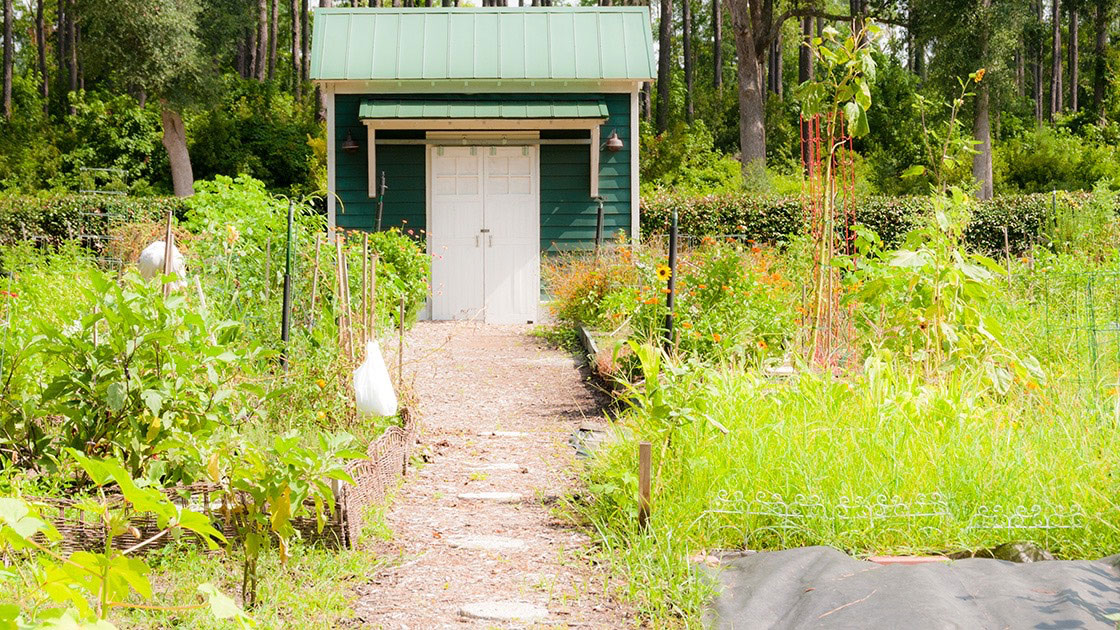
There’s no reason a community garden can’t be as beautiful as an ornamental garden; it’s just different plant materials. But in any case, this post looks at both garden design and garden culture to find ways that community gardens will be more broadly welcomed into the neighborhood, and treasured there. One more thing… if you’re on Twitter and like the thought in italics, click on the bird to tweet it… thanks, and enjoy!
Why this now?
It’s not yet clear how many Americans will migrate from larger places to smaller ones in the wake of the pandemic, but steep declines in Manhattan rental rates indicate it’s likely to be a substantial number. And those who are either moving from larger to smaller places, or who are staying where they are and making their bedroom community their day-and-night community by working from home longterm are likely to discover that their opportunities for social interaction are more limited there. And with traditional hangouts like bars being really risky now to the point that many places have shut them down, smaller communities hoping to attract and retain people need to find social interaction alternatives which are much safer. Community gardens may be one of the best alternatives, and for several reasons:
1. Gardeners love to talk about their gardens. Few things other than puppies are more reliable conversation-starters than gardens, especially when you’re in the garden.
2. Gardening happens outdoors, where you’re close to 20 times less likely to get infected with the coronavirus than indoors. And because most people don’t garden in the rain, sunshine on the biggest gardening days is a virus-killing bonus.
3. Raising food yourself means you need that much less food from the grocery store. And while groceries tend to be doing a mostly good job with shopper safety, it’s safer yet to raise your own produce.
Getting started
The biggest community garden challenge is coordinating all of the gardeners. But if you help them understand that they’re on a mission to do something never done before, but which could spread broadly and for which they may be remembered someday as pioneers, that may help. The first thing to remember in creating a community garden is the community. The ultimate goal is for the garden to pull the community together. At every step along the way, consider how the garden can bring the gardeners together, and also how it can help bring the neighbors who don’t plant and harvest there together as well.
Garden layout
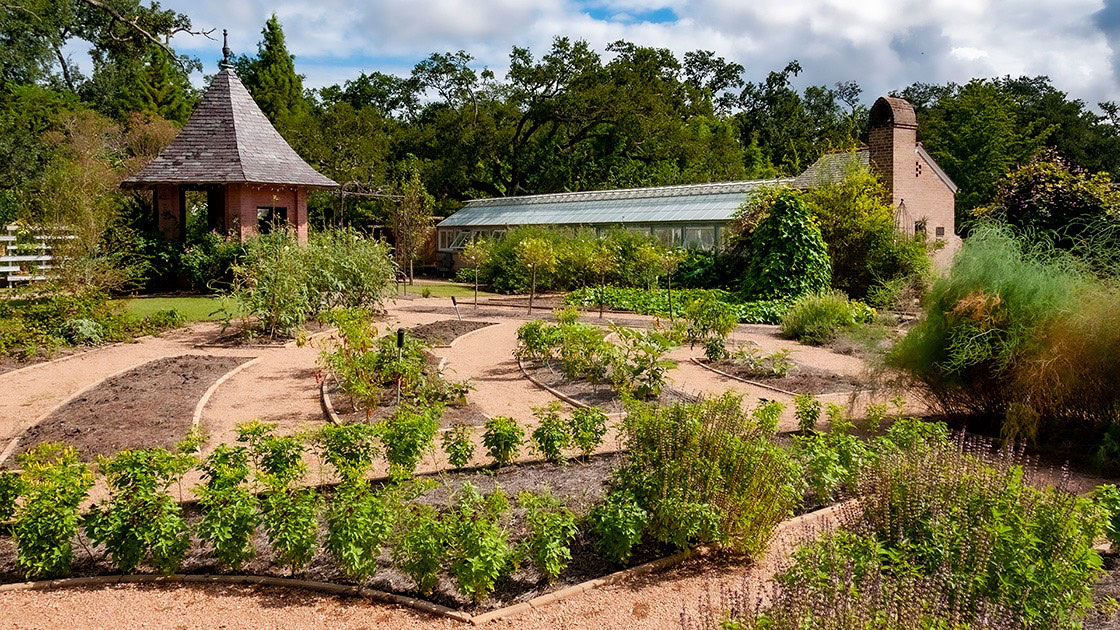
Design the garden as if it were an ornamental garden, then assign the allotments, which must not be all rectangular. It doesn’t have to look like a Renaissance garden; it might be inspired by an Art Nouveau pattern, for example. Just not a rectangular grid. No ornamental garden I’ve ever seen was laid out in a rectangular grid. That’s just boring. The very fact that most allotments aren’t rectangular helps the gardeners understand from the beginning that they’re embarking on something special and it calls for them to take more care with what they’re doing. With that foundation, follow these steps:
1. Lay out the primary network of places and paths. Some of these will be gathering places; others will be places flanked by utility structures like tool sheds, well houses, etc. The primary paths and places should be paved in brick or concrete pavers, set in sand.
2. Lay out the secondary network of paths, which are earthen foot paths between raised beds. Lay out paths and beds so that there are three sizes of beds: small, medium, and large.
3. Calibrate these sizes to what you think neighbors will be willing to tackle. The worst thing would be to make the beds too large, where they don’t properly maintain them. Have a common bed edge material.
Plant materials
It’s not entirely necessary, but it’s best if each bed in the community garden has one vegetable. This will make the appearance of the garden visually striking. Combine this with the fact that many if not most bed shapes may be unique means the combination of shape & species will definitely be unique. And just because someone has a green thumb with okra doesn’t mean they know how to grow great jalapeños. The fact that every bed will have one vegetable means that your gardeners will need (with your help) to revive that age-old gardeners’ tradition of swapping. “Wanna swap some green beans for some of my kale?” An early step toward creating community.
Borders
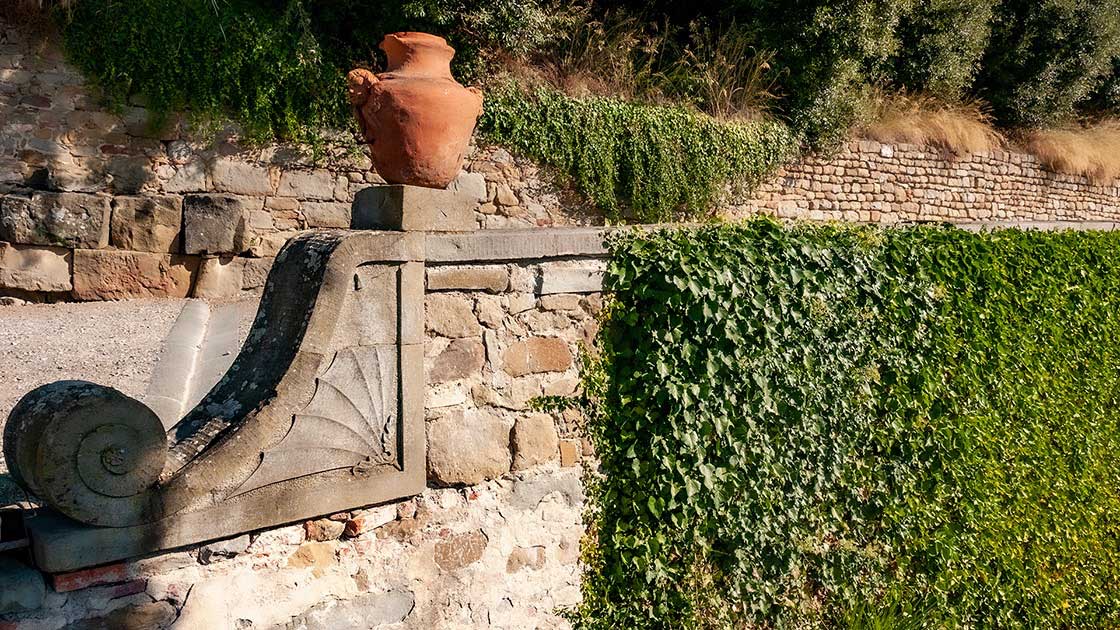
Many outdoor elements can serve as garden edges, including fences, hedges, walls, arbors, porches, and building walls. And you can use different edges on different sides of the garden according to what is beyond the garden on that side. Incidentally, because some of these edges (like hedges) are more easily adaptable for width, it’s simpler to make each of your garden rooms well-proportioned than it is indoors because standard building materials tend to have a narrow choice of widths.
Plantings near the edge
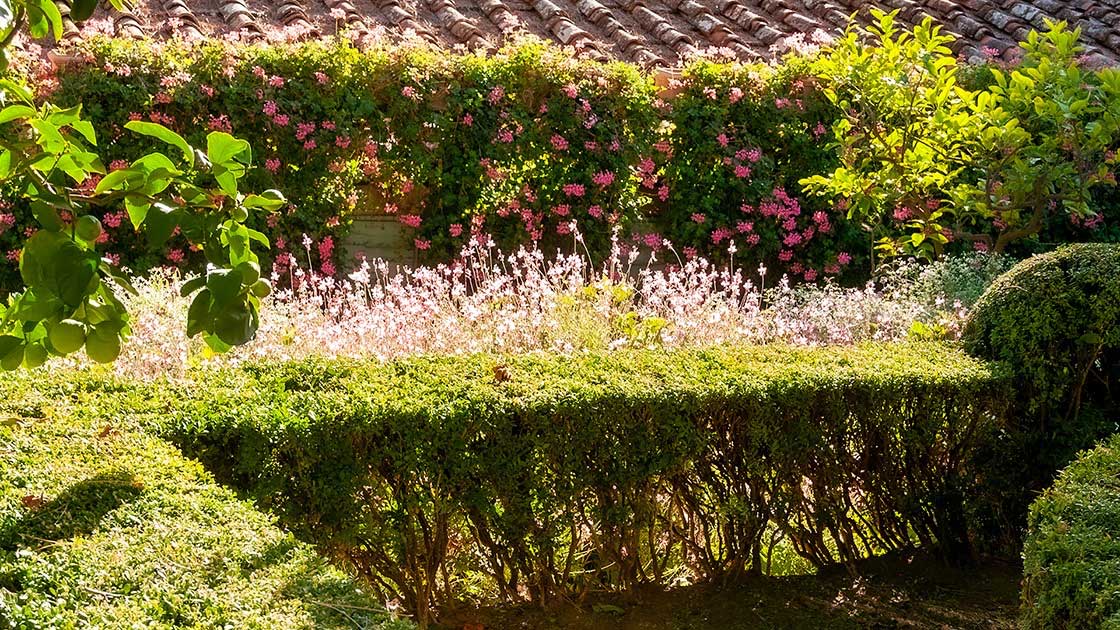
If the garden’s edge is something solid (hedge or wall) put the shorter vegetable beds toward the center and the taller ones next to the wall. If the garden’s edge is open, (picket or wrought iron) do the opposite so the small material is at the edge. And no, there’s nothing edible in this image, but the main point of this post is to make community gardens that are lovable, so feel free to employ any principle of ornamental gardens to edible gardens.
Upper levels
Be sure to include at least some second-level (arbor) gardens, if not even some third-level (fruit trees). Intensive gardening practices take into account the fact that not all light gets absorbed by the top plants, so more produce can be grown below. And in the case of an intensive arbor like this one, the complete shade makes a great place to sit and rest from your labors in the garden.
Wall gardens
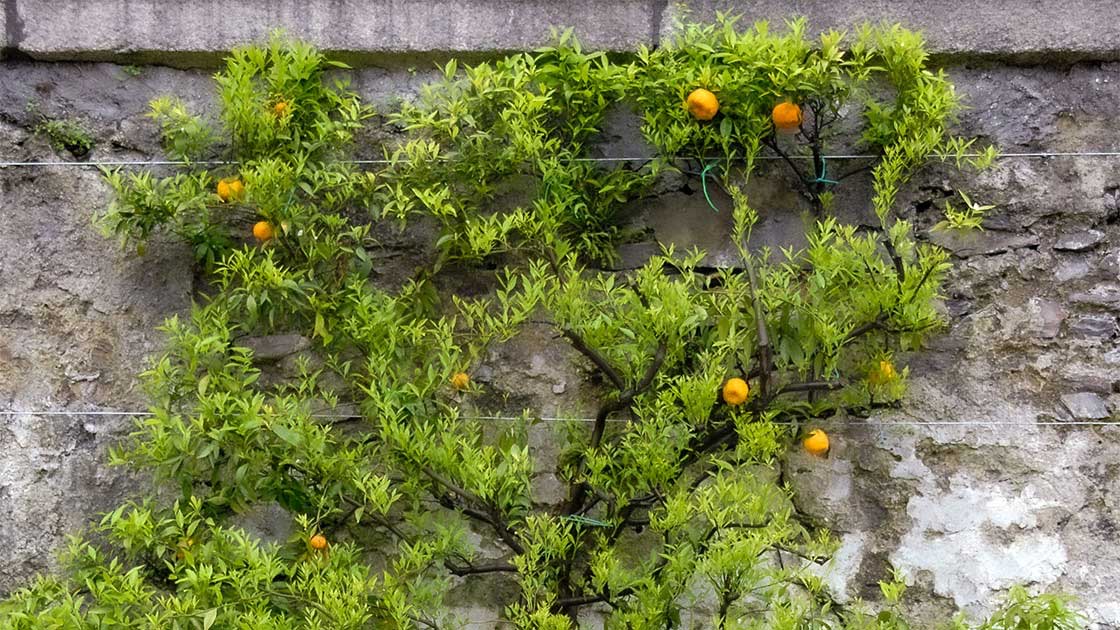
If you do build a garden wall, be sure that you train or espalier a wall garden upon it. If it faces the sun through enough of the day, why should it not be fruitful?
A shady place to sit
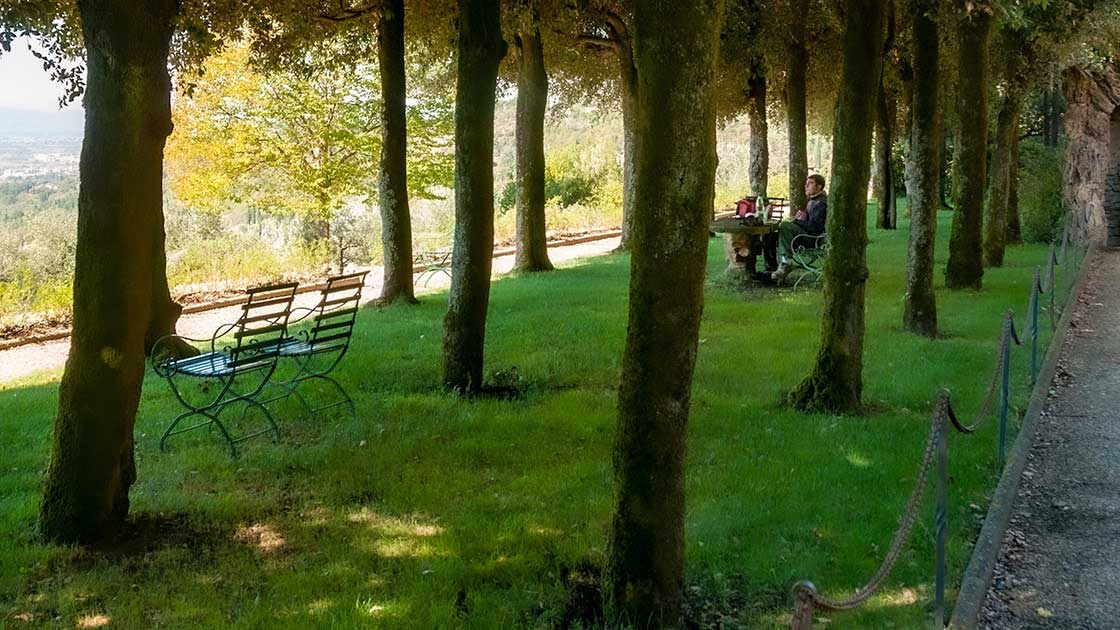
European gardens frequently have two or three levels, with arbors and maybe trees. At the very least, have arbors on each end of your garden. Furnish arbors with seats so you can sit and enjoy the garden (more on this later).
A sunny place to sit
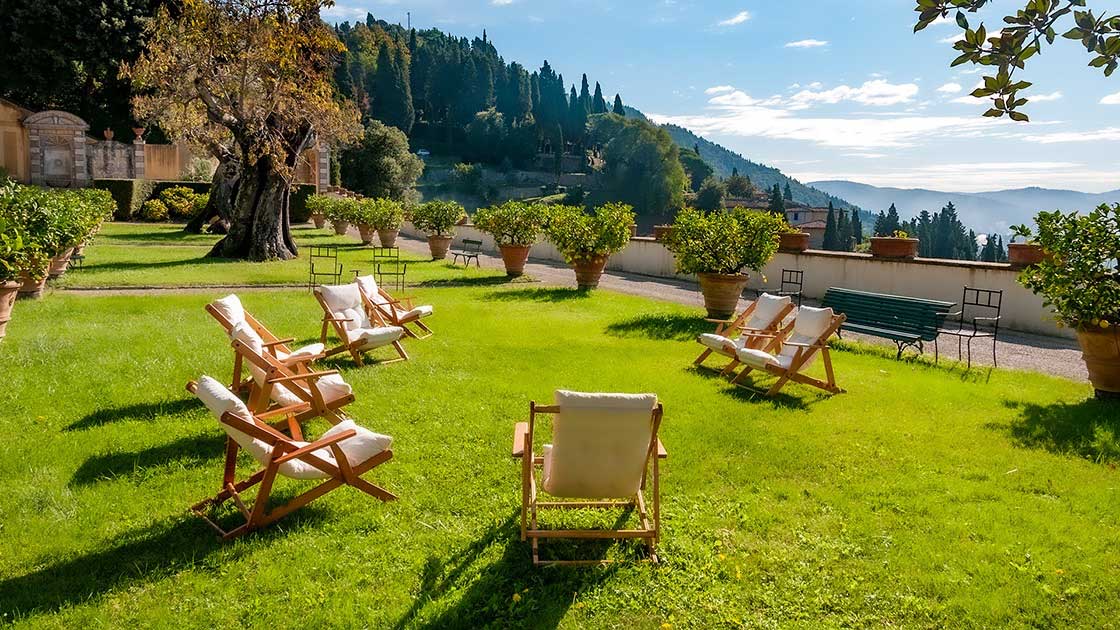
Depending on the time of year, you might prefer to sit in the sun instead of the shade. Because the first word in “community garden” is “community,” it’s important to design the garden in such a way that they gardeners can get acquainted if they want to. And gardeners often want to. In this era of the pandemic, social interaction can be risky in many settings, but look how easy it is to maintain social distance between family groupings in a garden.
Garden structures
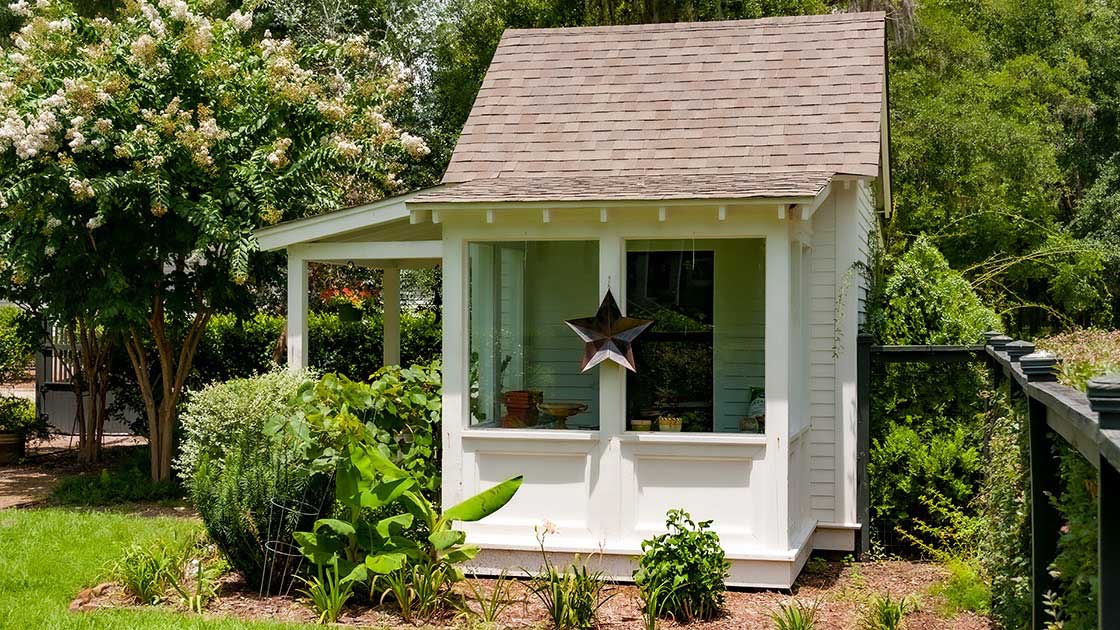
The next step is to place your buildings, both utilitarian ones like tool sheds, potting sheds, and well houses plus sitting structures like the arbors just mentioned plus roofed sitting pavilions.
A place for solitude
Be sure to include a number of arbors and sitting pavilions for one person, and maybe a few for small groups, where people can sit and contemplate, looking out over this beautiful garden. Include “morning pavilions” and “evening pavilions” on each side, where one person can sit on the east side with the sunrise streaming over their shoulder as the mist rises off the garden, or on the west side at sunset, admiring the work of the day.
Water channels

Do you need to channel rainwater to a rain pond? Water channels can run wherever in the garden they need to, but can be especially interesting along your garden paths where the running water is easiest to see. Water is always welcome in a garden design, and you might create a small fountain or two somewhere along the way.
Frog pond
Consider designing your rain pond as a frog pond because frogs are excellent insect-fighters. Frog ponds have edges low enough a frog can leap out, have some plant cover, and footing like lily pads on which the frogs can sit.
Portals
The portals into your garden are important. People should feel they are entering into a special place.
"Kiss of the sun for pardon. Song of the birds for mirth. You’re closer to God’s heart in a garden than any place else on the earth.” ~ Dorothy Frances Gurney
Not everyone feels so strongly about gardens as Ms. Gurney, but make your portals important anyway.
Evening light
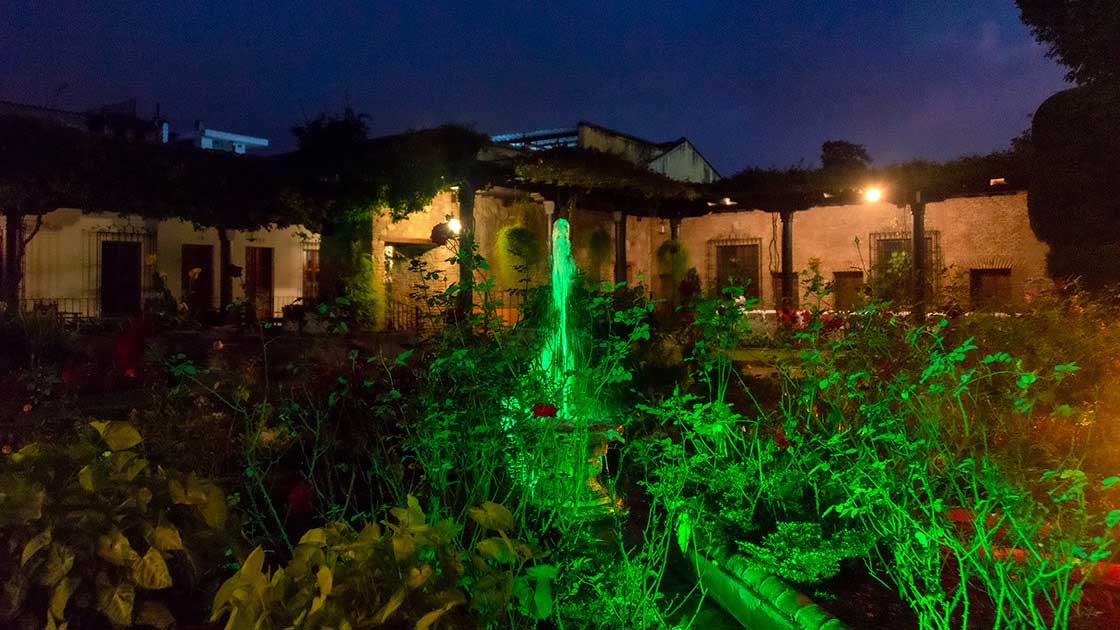
Might you light your garden, or at least part of it, for small evening events? Remember, this will be one of the most beautiful places in the neighborhood and if everyone does their jobs right, a wonderful place to gather.
Showers
How about outdoor showers? And a changing pavilion? Someone could bring clean clothes with them, then shower and change before going home so they come in fresh and depart clean, not stinky and dirty. And properly screened outdoor showers are delightful.
An agricultural aesthetic
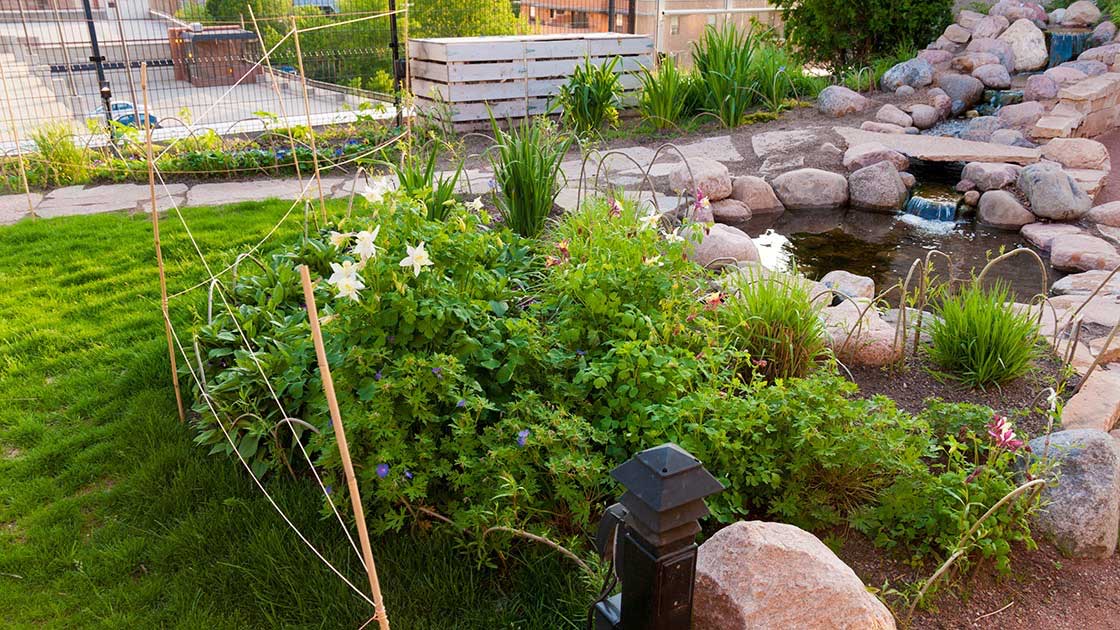
Consider how to use the small elements of the garden artfully to create an “agricultural aesthetic.” These elements may include: sticks and twine, terra cotta pots, stones, gourds, vines, and branches. You might even have design competitions.
Agrarian community festivals
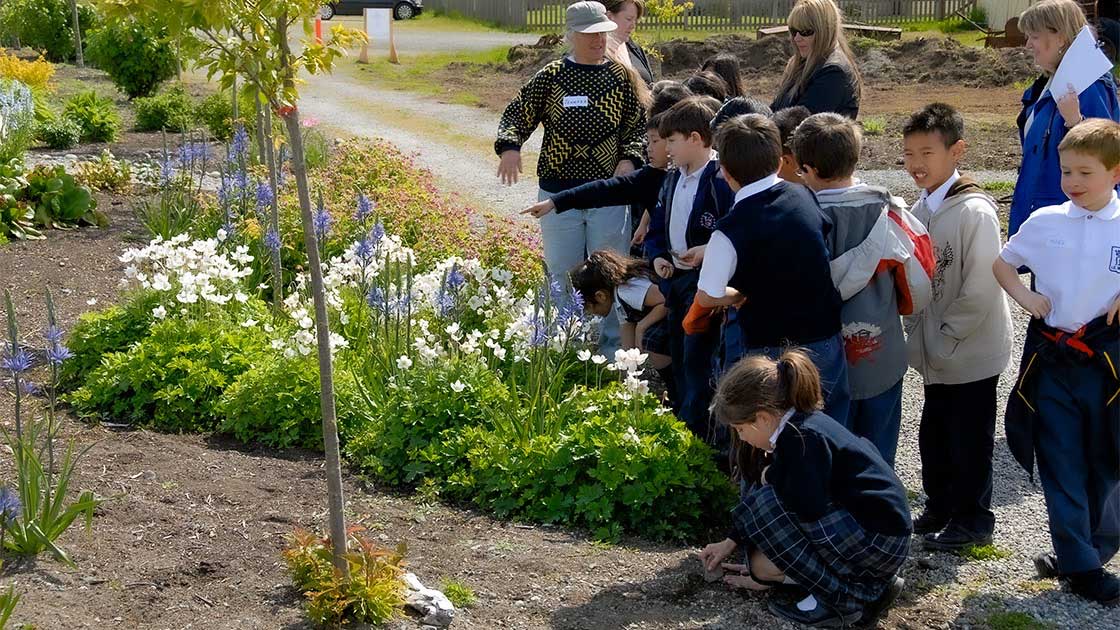
Much like ancient cultures, organize a series of seed-time and harvest celebrations. Make these on Saturdays, timed according to planting and harvest best practices, and organize them in such a way that they become a neighborhood cultural event. At the end of the day, a community garden isn’t just a garden for members of your community with green thumbs. Instead, it’s also a setting for creating culture and community among all your neighbors, whether or not they are gardeners themselves.
This article was published on the Original Green blog.




